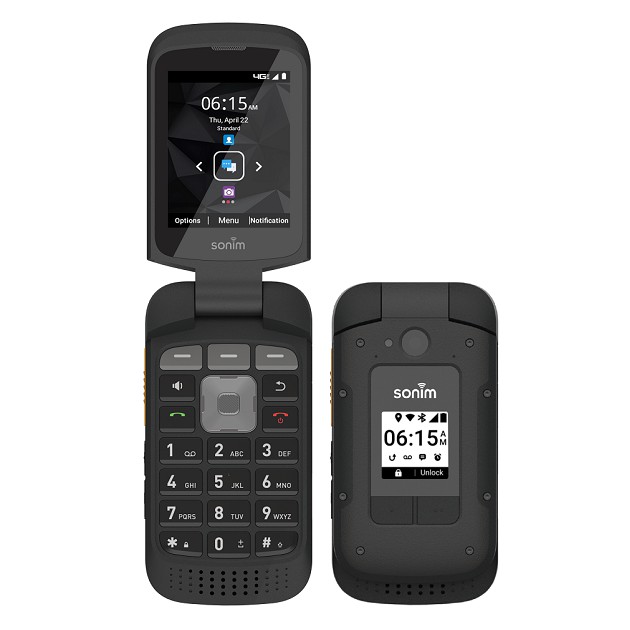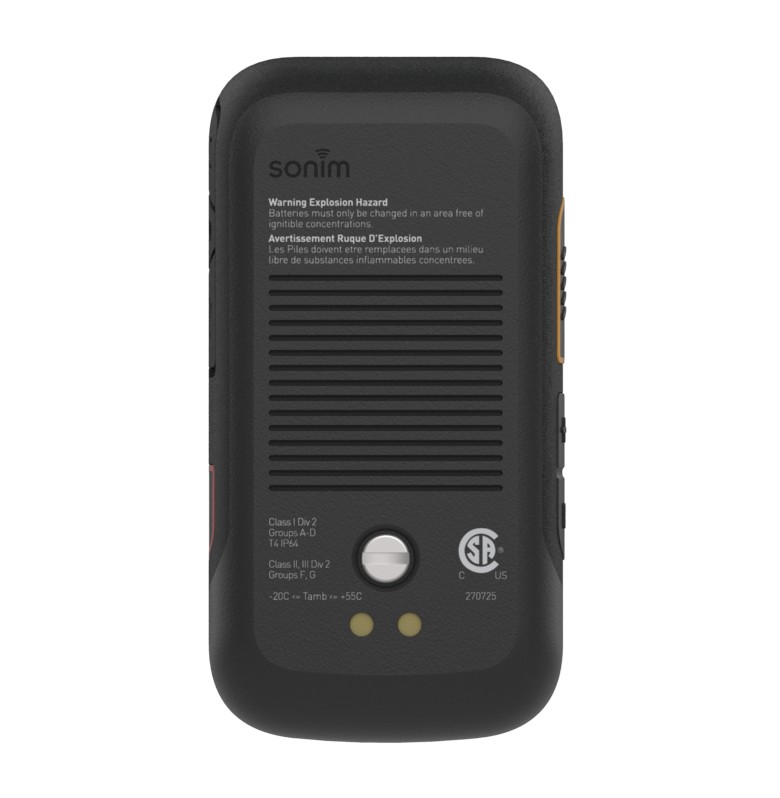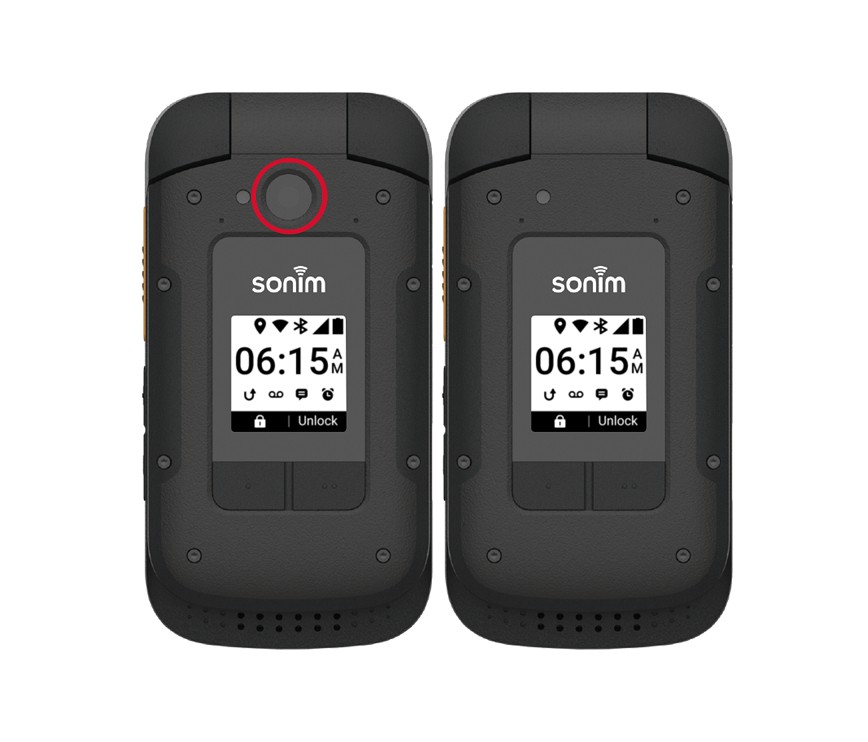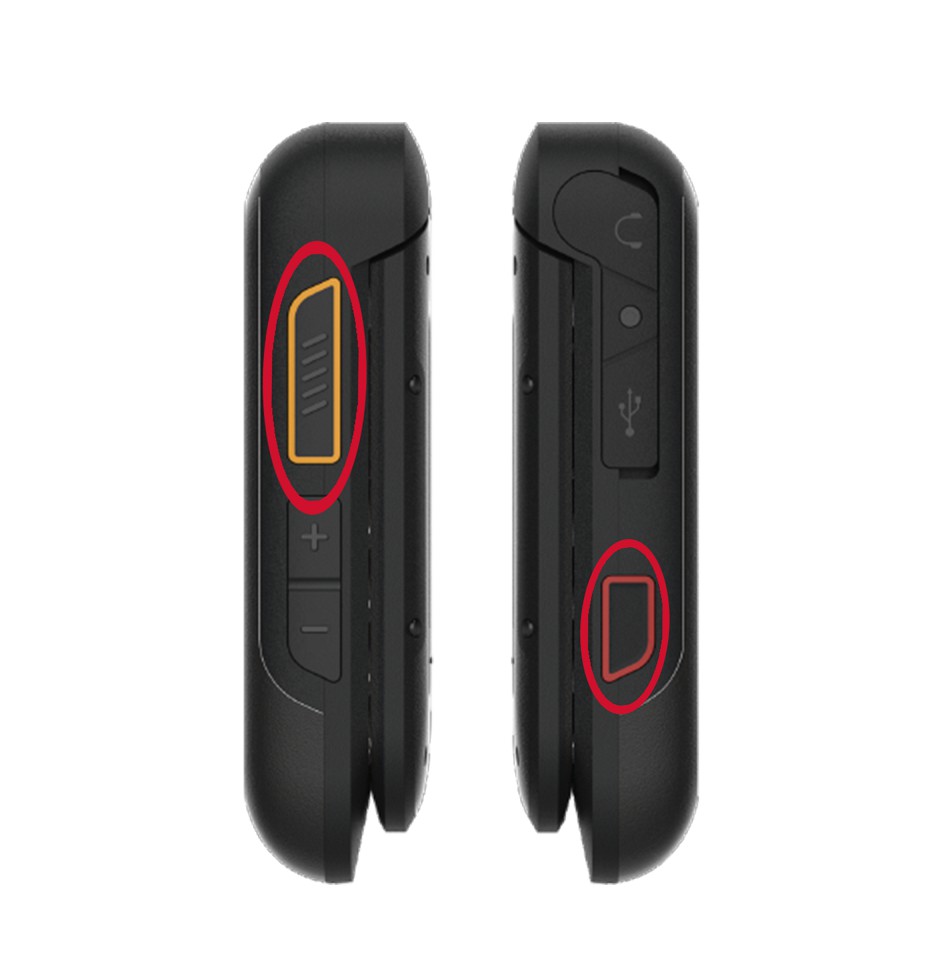






This is Sonim XP3 Plus, the direct successor to the vanilla XP3. Despite the similarities in their names, the XP3Plus is a totally different device, especially on the inside. Like its predecessor, it also comes in a flip clamshell design, but as far as specifications are concerned, everything got upgraded.
First of all, the XP3 Plus comes in a slightly larger 2.8-inches screen, and it is powered by a more stronger octa-core Snapdragon 662 4G CPU. This chipset is backed by Adreno 610 GPU, 2GB RAM, and 16GB ROM. The cover screen also did increase to 1.3-inches, up from the 1.08-inches on the older model.
Sonim released two models of the XP3 Plus; one with an 8-megapixel main camera, and the second one without any camera sensors. As you would expect, both models are equipped with IP68 and MIL-STD-810H certification, making both dust and water resistance, as well as drop resistance from 1.5m.
If you work in a hazardous environment, or you just need a rugged flip mobile phone for your outdoor adventures, you can never be wrong with the Sonim XP3Plus. In addition to the built quality, the device also comes with a 2300mAh battery, has WiFi, Bluetooth 5.0, and runs AOSP Google Android 11 (Go Edition) out of the box. The table below contains the full specifications of Sonim XP3 Plus.
| Launch This refers to the date when this device was officially introduced into the market. | Announced 2021, September / Released 2021, September |
| Brand / Model These are key identifiers that indicate the manufacturer or company that produces this smartphone, and the specific model of the phone. | Sonim / XP3 Plus / XP3900 |
| 2G Bands 2G refers to the second generation of cellular technology and includes various frequency bands for basic voice and text communication. | 850 / 900 / 1800 / 1900 |
| 3G Bands 3G refers to the third generation of cellular technology, encompassing different frequency ranges for faster data speeds, mobile internet, and multimedia capabilities. | 850 / 1700(AWS) / 1900 / 2100 |
| 4G Bands 4G refers to the fourth generation of cellular technology, operating in specific frequency bands to provide significantly faster data speeds, supporting high-definition video streaming and advanced applications. | 1, 2, 3, 4, 5, 7, 12, 13, 14, 25, 26, 30, 39, 40, 41, 66, 71 |
| Ruggedity This indicates the device's durability and ability to withstand harsh conditions or impacts. It is a very popular term used with tough or rugged phones. IP68/IP69K are international ratings that measure a smartphone's resistance to dust and water. MIL-STD-810H is a military standard that sets criteria for the environmental and durability testing of electronic devices. It means this device has undergone various tests to demonstrate its resilience in challenging conditions, such as extreme temperatures, humidity, vibration, and shock. |
IP68 and MIL-STD-810H - Water/dust/weather proofed / Drop-to-concrete Resistance |
| Dimensions / Weight: This refers to the physical size and weight of the device, measured in millimeter (mm) and grams (g) respectively. | 116 x 60 x 28 mm / 220 grams |
| SIM SIM stands for "Subscriber Identity Module." It is a small card, typically inserted into a slot in a mobile phone, that contains important information for connecting the device to a mobile network. SIM cards can come in various sizes, including standard SIM, micro SIM, nano SIM, or even electronic (eSIM), depending on the phone's design. | Single Nano SIM |
| Screen Display refers to the screen or visual interface of the device. It includes details such as screen size, resolution, and technology (e.g., LCD, OLED, AMOLED). |
Main: 2.8-inches / TFT screen Cover: 1.3-inches / IPS LCS |
| Resolution Screen Resolution refers to the number of pixels that make up the display screen and is typically expressed as a combination of horizontal and vertical pixel counts (e.g., 1920 x 1080, 2560 x 1440, or 3840 x 2160). The screen resolution determines the level of detail and sharpness of the visual content displayed on the smartphone's screen. Higher resolutions generally result in crisper and more detailed images and text |
240 x 320 pixels / 4:3 ratio / 143 PPI Cover: 240 x 240 pixels |
| Features Camera features encompass various functionalities and capabilities that enhance the device's photography and videography experience. These features can include Optical Image Stabilization (OIS) Panorama, HDR, Ai Mode, Night Mode, Portrait Mode, etc. | Display shatter protected |
| OS This is the Operating System. It refers to the software platform that runs on the smartphone and manages the device's hardware and software resources. Common smartphone operating systems include Android (developed by Google), iOS (developed by Apple). | Sonim OS (based on AOSP Android 11) |
| Chipset This refers to the integrated circuit that serves as the device's central processing unit (CPU). It plays a pivotal role in the smartphone's performance, speed, and energy efficiency. |
Qualcomm SM6115 Snapdragon 662 (11 nm) - Octa-core (4x2.0 GHz Kryo 260 Gold & 4x1.8 GHz Kryo 260 Silver) - Adreno 610 |
| Memory This encompasses two components: storage capacity and RAM (Random Access Memory). Storage capacity, typically measured in gigabytes (GB) or terabytes (TB), dictates how much internal space is available for apps, files, and media storage. RAM, measured in gigabytes (GB), is temporary memory crucial for multitasking and app performance, with more RAM generally leading to smoother operation and faster task-switching capabilities. | 2GB RAM + 16GB ROM / Dedicated SD-card support up to 128GB |
| Main The main camera, also known as the rear camera, is the primary camera on the back of the smartphone. It is typically used for capturing photos and videos in various scenarios and is often the more powerful and versatile camera on the device | 8MP rear camera - camera enabled model only |
| Features Camera features encompass various functionalities and capabilities that enhance the device's photography and videography experience. These features can include Optical Image Stabilization (OIS) Panorama, HDR, Ai Mode, Night Mode, Portrait Mode, etc. | 1080@30fps video recording / LED Flash |
| Connectivity This encompasses the device's ability to connect and communicate with other devices and networks. It includes features such as cellular connectivity, Wi-Fi, Bluetooth, NFC (Near Field Communication), and USB connectivity options. | Bluetooth 5.0 A2DP / WiFi 2.4G-5G / FM Radio / USB Type-C |
| Navigation Navigation refers to the device's ability to determine and display location information and provide directions to users. This functionality is usually powered by Global Positioning System (GPS) technology. | GPS, GLONASS, GALILEO |
| Sensors This refers to the various built-in sensors that enable the device to gather information from its environment and interactions. Common sensors found in rugged smartphones may include fingerprint sensor, light sensor, barometer sensor among others. | Accelerometer, proximity, barometer |
| Battery This section refers to the device's power source and its related specifications. This typically includes details such as the battery capacity, measured in milliampere-hours (mAh) or watt-hours (Wh), and it charging details. | Li-Ion 2300mAh, removable |
| Others This is a catch-all category that includes various additional features, specifications, or capabilities that don't fall under the major categories like display, camera, memory, or connectivity. | Black color / HAC compatible / 100dB loud speaker |
These specifications were entered manually, hence we CANNOT guarantee 100% accuracy. Also, that your device is listed on this website DOES NOT call for reckless usage! It is crucial to exercise due diligence, as we cannot be held responsible for any damage to your device due to overconfidence in it built quality.
Leave a Reply